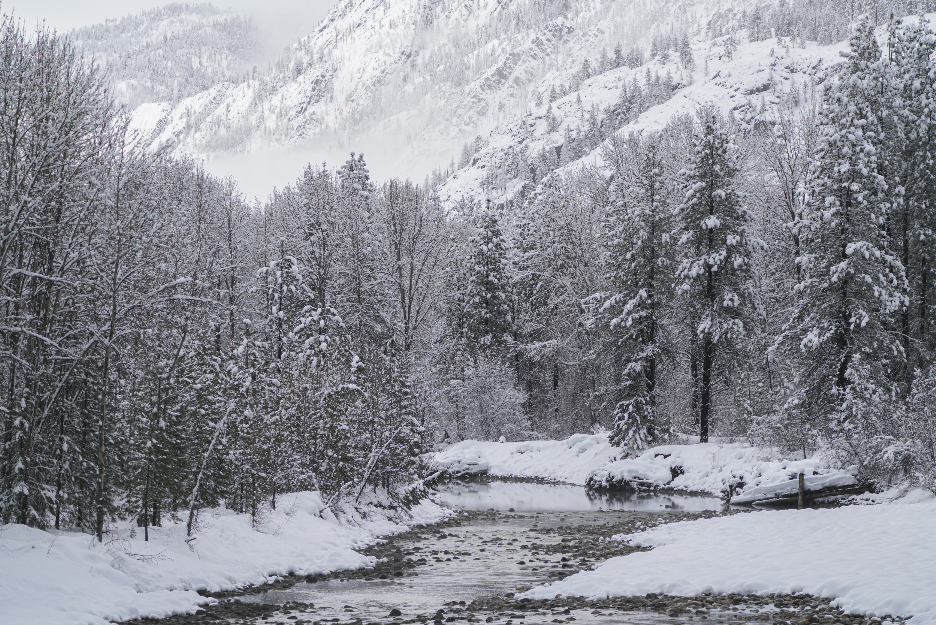December 29-January 4, 2025
Midwinter snow and winter ecology

Things have been fairly quiet this snowy week, as if most animals are snoozing through the fresh blankets of falling snow.
Week in Review
It was interesting to see that no wildlife observations were posted on the Nature Notes Facebook group this week, and when I ventured outside myself, I only noticed an occasional bird and no other animals besides a few deer.

It might feel like the world is asleep under all this deep snow, but there's more going on in the winter than you realize. And, since the world outside is so quiet right now, I figured we may as well bring our energy inside for a lively winter ecology talk at the Winthrop Library next Saturday.

In this fascinating talk, we'll discuss how snow forms, the surprising ways that snow supports a thriving web of life, and how plants and animals survive the cold. Did you know, for example, that snow not merely frozen water but is absolutely loaded with nutrients?!

This is a big topic and there are many books and research papers on snow ecology. That means that in this talk we'll only touch the "tip of the iceberg," but it's still eye-opening to begin learning more about the winter world around us.

The talk will be at the Winthrop Library on Saturday, January 11, from 3-4 p.m. While donations are appreciated it'll be a free talk, so I hope you can join us. [If you can't make it to the library next Saturday, I will offer the talk again as an online presentation for the North Cascades Institute on January 22 (this talk will be raising money for NCI so there's a $10 fee).]

And stay tuned because I will be covering a variety of winter ecology topics in the newsletter over the coming months, and if you're interested, I also explored ways that conifers thrive and adapt to winter in my Lukas Guides newsletter earlier this week.
Observation of the Week: Chickadees
It's possible that the most dependable winter birds in the Methow Valley are the black-capped and mountain chickadees that add a cheery note to even the most dismal days. Despite their diminutive size, these energetic little bundles of feathers are surprisingly hardy and readily tolerate temperatures below -40 degrees so they're fairly common all winter long.

While black-capped chickadees are common around the valley, mountain chickadees are high-elevation specialists that wander to lower elevations in smaller numbers during the winter.

Chickadees have a number of adaptations that help them thrive in such cold conditions. They add so many extra warm downy feathers that their bodies become 10% bigger in the winter. They also increase their metabolic rates by 20-30% and shiver continuously, which raises their body temperature 7 degrees. And, if that isn't enough, they will also huddle together or sit on their feet and tuck their bills into their feathers to warm their bare skin.

All these adaptations wouldn't matter if chickadees weren't finding enough food, but they are surprisingly resourceful. During the day, they move continuously in search of insects and invertebrates, finding adults, pupa, and eggs hidden in bark crevices or among exposed leaves. They also begin stashing extra food in the autumn, so they have a backup supply of food if they need to supplement their diet.

In many regions, one of their best tricks is that they specialize on eating the caterpillars of needle-miner moths that live inside conifer needles. Each needle on an infected tree has a single caterpillar and chickadees will snip off the ends of needles then peel back the sides like bananas to reveal tiny caterpillars.

If anything, most of the time chickadees find more than enough food and stay warm enough that they have lots of time and energy for the cheerful banter and lively antics that make them such popular birds.

